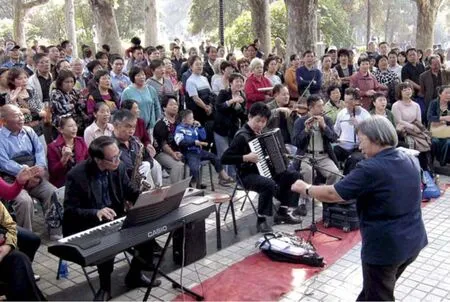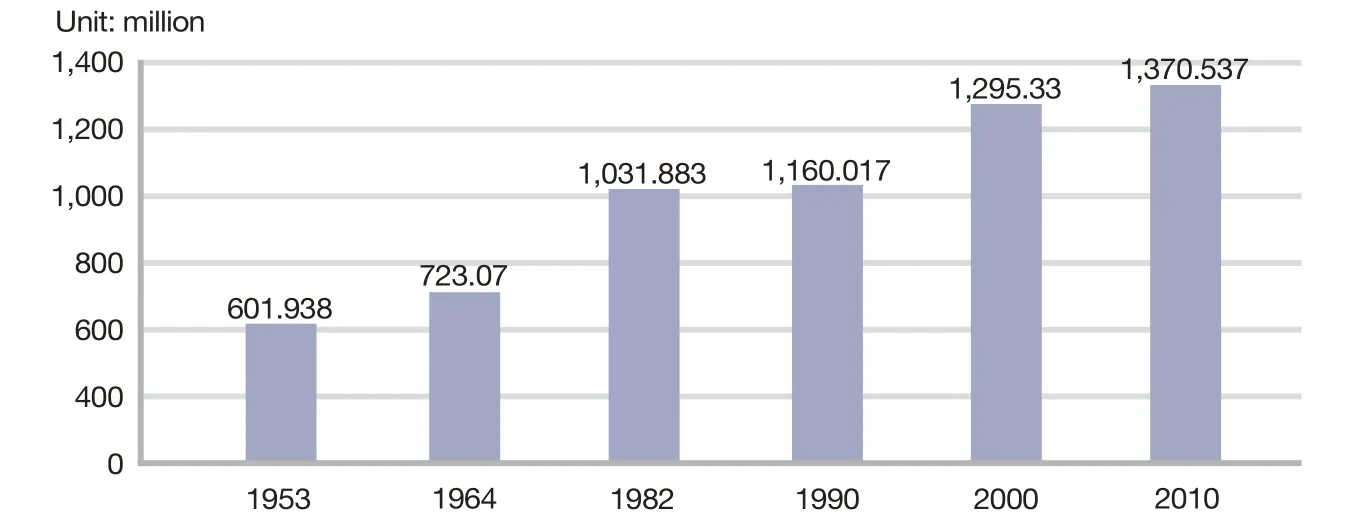POPULATION TURNING POINT
2011-10-14ByJINGXIAOLEI
By JING XIAOLEI
POPULATION TURNING POINT
By JING XIAOLEI
China’s population grew by less than 1 percent annually in the last decade, but it still remains the world’s largest at 1.37 billion people, according to results of the sixth national population census released in late April.
Figures released by the National Bureau of Statistics (NBS) show China’s population grew 5.84 percent from 2000 to 2010, or 0.57 percent per year.
The nation’s urban population increased 13.6 percent, making up 49.7 percent of the total population. Meanwhile, the population was increasingly getting older. People aged 60 years and older accounted for 13.26 percent of the population, an increase of 2.93 percentage points from 2000.
“The objective of the population census is to have a clear understanding of our national demographic conditions from all kinds of perspectives,” said Ma Jiantang, Director of the NBS.
Ma interpreted some of the figures,saying according to results of the 2010 and 2000 censuses, the urbanization rate in China had risen rapidly. The population of eastern coastal areas also continued to swell, indicating the fl ow of migrants has much to do with development levels of different regions.
The census, for the first time, counted migrant workers where they were living,rather than where they were registered. It found more than 261 million Chinese had worked away from hometown for more than six months in 2010, almost double the fi gure in the previous census.
Population experts said the sixth population census revealed five major changes in China’s population—higher education level,greater mobility, faster aging process, uneven distribution and improved gender ratio.
Census figures show the college attendance rate rose from 3.6 percent to 8.9 percent in the last decade, and 4.06 percent of the population received no schooling at all.
“The sixth census shows us the average education level for Chinese citizens has been greatly raised, and its speed exceeds the population growth, which had never been seen in human history before,” said Hu Angang, Director of the Center for China Study that was jointly established by the Chinese Academy of Sciences and Tsinghua University, at a recent seminar.
Mu Guangzong, a professor at the Institute of Population Research of Peking University, said the core of China’s population issue has shifted from quantity to its structure. “China has entered a stage of stable low fertility and low increase, and the fuse of the population explosion has been extinguished. More attention should be given to the low birth rate and age structure instead of the huge aggregate number,” said Mu.
Greater mobility

XING GUANGLI
Census fi gures show 261 million Chinese people lived in places other than the towns(townships or streets) of their household registration where they had left for more than six months, an increase of 110 million or an 81-percent growth over a decade ago, which took many experts by surprise.
There had been population mobility in many other countries during certain periods,but what happened in China was the largest in terms of the number of migrants, with 40 percent being young people, said Li Jianmin,Director of the Population and Development Research Institute of Nankai University. He predicted the tendency would continue in the future.
But, due to nonconformity between rural and urban social security systems, the large migrant population was meeting with difficulties in having equal access to basic public services, said Zhai Zhenwu, Dean of the School of Sociology and Population of the Renmin University of China. “This could result in a series of social and economic problems,” he said.
The sixth national population census also reveals the provincial population chart was reshuffled in the 2000-10 period as the top five most-populous provinces were Guangdong, Shandong, Henan, Sichuan and Jiangsu, while the ranking in 2000 was Henan, Shandong, Guangdong, Sichuan and Jiangsu.
“We can see that the Pearl River Delta,the Yangtze River Delta and the Beijing-Tianjin belt are getting denser, which means the uneven population distribution has been worsening instead of getting eased,” said Zhai.
The overly dense population in coastal areas including Guangdong has posed great challenges to many aspects of the urban life:resources, the environment, housing, transportation and the cost of labor.
“Many of the large cities resort tohukou,or registered permanent residence, to curb the swelling population but it always ends up in vein,” said Li.
“It is warning us that our social and economic policies concerning population distribution should be apt to guide the population fl ow to a reasonable direction, such as cities in the central region and the Bohai Rim,” said Zhai.
Low fertility
According to the sixth national popula-tion census, China’s fertility rate now was less than 1.5 children per couple in 2000-10.It is on par with, or lower than, those of developed countries such as the United States,France and Spain.
“The rate is alarmingly low for a large country like China,” said Wang Feng, a population expert and Director of the Brookings-Tsinghua Center for Public Policy in Beijing.
In the same period, China added about 40 million people aged 60 years and older. The number of senior citizens grew because of the longer life expectancy. The proportion of senior citizens to the population has also risen due to the low birth rate.
Wang said the census results should be a wake-up call to policymakers to stop pushing the gas pedal on an existing downward trend.
In the early 1970s, the Chinese Government became increasingly aware that the overly rapid growth of the population was unfavorable to economic and social development. It decided to vigorously carry out family planning in both urban and rural areas and integrated the plan for population development into the plan of national economic and social development.
At the end of the 1970s, the Chinese Government made it a basic state policy to carry out family planning and population control and to improve the living standards of the population, and has clearly incorporated it in the Constitution.
According to Mu of Peking University,the family planning policy compromises the long-term demographic balance to ease shortterm population pressure, but in the process,triggers other population-related problems,including heavier pension burdens, a worsening gender imbalance and labor shortages.
Now the country still enjoys the “demographic bonus.” Its working-age population increased after the family planning policy brought down the proportion of children in the population. Labor force is still relatively abundant because the aging population has not yet peaked.
“We believe the total number in the labor force will peak in 2013, and labor supplies are still sufficient for now. But, after 2013, China’s labor resources will gradually decline, a process that will accelerate after 2020,” said NBS Director Ma.
Some population experts have even predicted a 23-percent decline in the workingage population—people between 15 and 64 years—between 2015 and 2050.
If the current birth control policy stayed unchanged, China’s labor forces would be reduced by 100 million per decade since 2030 when the population of people aged 65 years and older account for 28 percent of the total population, said Zeng Yi, Director of the Center of Population Aging and Family Research of Peking University.

AGING ERA: A senior’s choir performs in a park in Zhengzhou, Henan Province. People aged 60 years and older have accounted for 13.26 percent of the total population


WELL EDUCATED: Students attend class at the University of Science and Technology of China in Anhui Province. The sixth national population census showed Chinese citizens’ education level improved remarkably in the 2000-10 period

Total Population in Census Years

Sex Breakdown of the Chinese Population
In 2000, every 9.1 work-age laborer supported one person aged 65 years or older in China, but the number of supporters is expected to shrink to 3.7 by 2030.
To achieve a balanced population development in the long run, a growing number of population experts have suggested the government take measures to ensure the population maintains a moderate fertility rate.
There has been growing speculation whether the government will relax the one-child policy—introduced in 1980 as a temporary measure to curb surging population growth—and allow more couples to have a second child.
Zeng proposed the one-child policy be gradually replaced by a more flexible twochild policy accompanied with limits of late childbirth and birth intervals of three to four years.
“On the premise of setting up proper late childbirth limits and proper length of birth intervals, the two-child policy can be made open to families,” said Zeng. He explained the two-child policy would greatly ease labor shortages, and late childbirth limits and prolonged birth intervals would prevent the total population from rebounding in the short term.
But there are no signs the government has decided on any adjustments.
Latest census shows structural imbalance of population has replaced explosive growth to become China’s top challenge

